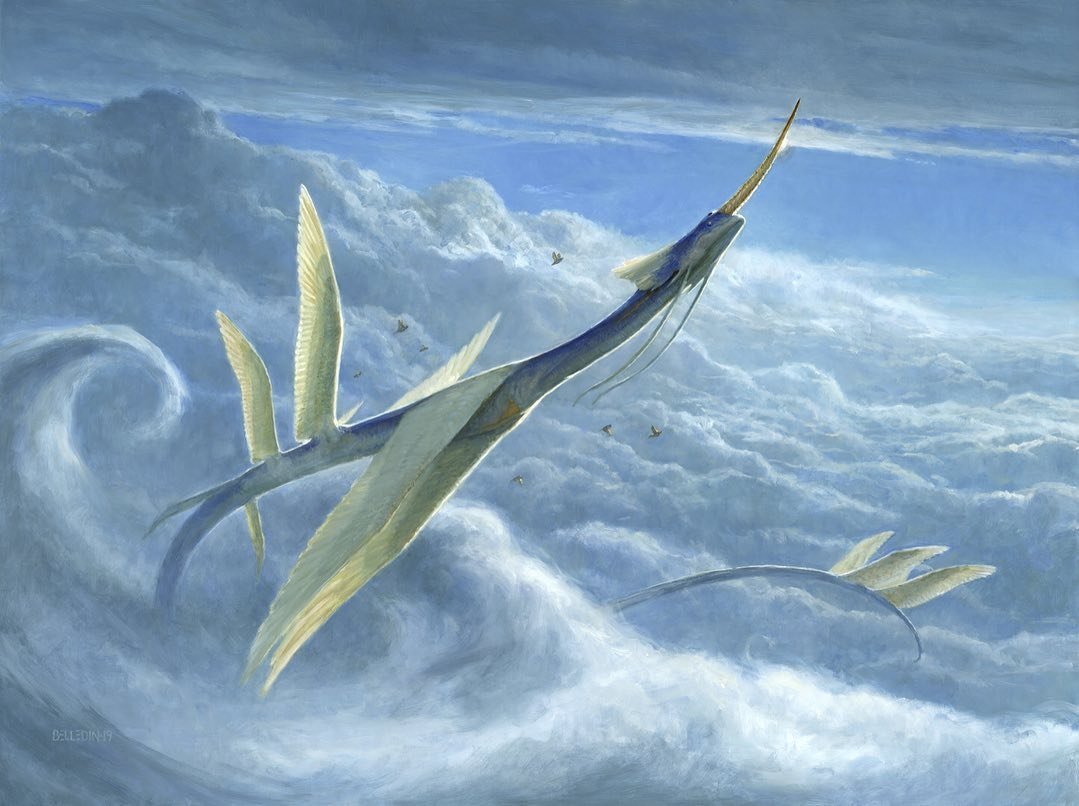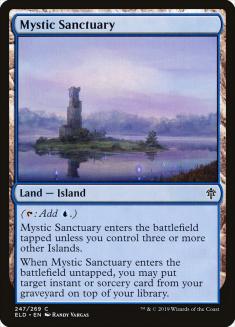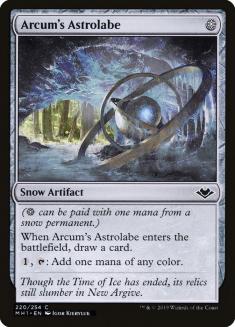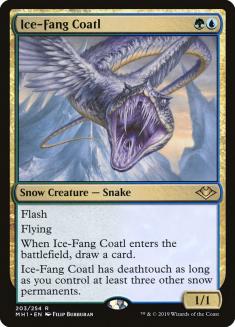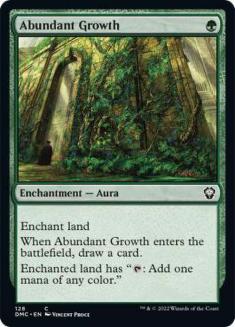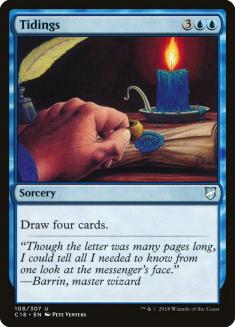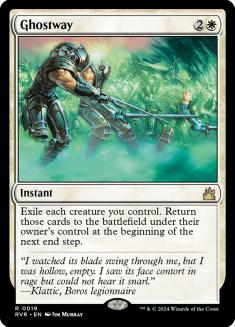My statement about Yorion, Sky Nomad seemed to be met largely with confusion. Some people didn’t know if I was serious, and others didn’t know why. I didn’t want to call it a hot take before formally seeing other people’s reactions, but based on past experiences, I didn’t really expect this to be the consensus view.
I genuinely think Yorion’s the future, but I also think it’ll take time to get there. The only reason I think it’ll take time is that people have really strong biases against it.
Okay, so why do I think it’s so strong?
This is the correct way to evaluate companions. They can be too strong if either the requirement is too easy or the payoff is too strong. There are very few Magic cards that wouldn’t be worth giving up a sideboard slot if it meant you could just start with it in your opening hand as an additional card, which means that even a very weak companion is strong if you don’t have to give anything up to get it. At the same time, it can be worth making considerable sacrifices if it means the card you get for free is very strong.
I believe Yorion in Modern is closer to both of these than it may first appear.
I’ve written a number of articles over the years about potential reasons to play more than 60 cards, and recently, Autumn Burchett had experimented with Battle of Wits and concluded that there could be value to playing a larger than 60 but not large enough for Battle of Wits deck even before Yorion was previewed:
The biggest reason to play decks with more than 60 cards before Yorion was Mystic Sanctuary. Mystic Sanctuary is an absurd card to have in your library, a bad card to draw early in the game, and a fine card to draw late in the game. The more Mystic Sanctuaries you can play, the better, because fetching them several times is strong, but the cost of playing too many is that you draw them more, which is bad. If you have more cards in your library, you get to have access to more throughout a game, yet not draw them as much.
This really just highlights a general issue with fetchlands. In order for fetchlands to work, you have to play lands to find with them. The fetchlands are stronger than the lands they find. They give you more options and they fuel your graveyard. If you’re playing a three-color deck, fetchlands are essentially trilands, while shocklands are two-color lands, so your mana is better if a larger portion of your lands are fetchlands, but there’s a floor on the number of lands that you can find that you have to play. That floor is a static number, not a percentage of your deck, because what matters is that enough exist to find, not that you actually draw them. This means your mana gets better in Modern as your deck gets larger up to the point where you run out of good fetchlands to play.
As it happens, 80 is a great number of cards to really optimize a robust fetch manabase in Modern and particularly improves mana if you’re trying to play more than three colors.
People talk about the cost of increasing the size of a deck as a loss of “consistency,” but that ignores the fact that your mana actually becomes more consistent as fetchlands become a higher percentage of your mana base. So yes, you draw any given spell less often, but you actually have the right lands more often. It’s a trade-off.
There’s also more to this Mystic Sanctuary thing than meets the eye.
Specifically, Mystic Sanctuary is more powerful the more differently named spells are in your graveyard. Mystic Sanctuary being more powerful means all your applicable fetchlands are more powerful. This incentivizes playing a greater variety of spells. With 60 cards, you can accomplish this by just playing three copies of each rather than four, but if you’re actually going to do that, you’re choosing to sacrifice the consistency you gain by playing only 60 cards — if playing four copies of all of them instead of three just means you’d need to add more lands to keep the ratios right, and adding more lands is desirable anyway, then playing 60 cards is almost strictly worse.
Of course, that assumes that you’d only want to play three of everything to make room for greater variety, which isn’t really what we’ve seen. People do still play four copies of cards even in Mystic Sanctuary control decks. I’m just suggesting that there are pressures in other directions and that building a larger deck is more of a trade-off than a cost.
I’d estimate that there’s about a 20% chance that, even ignoring Yorion, some of these Mystic Sanctuary decks would be better if they just added more cards. I doubt 80 would be the optimal number, but again, I’m not trying to argue that Yorion is free — I’m arguing that the cost is lower than most players suspect.
There is another consideration, which is the fact that draws are somewhat self correcting in a way that is more true for smaller decks and less true for larger decks. Specifically, if you draw too many or too few lands, you change the ratio of the rest of your deck so that it becomes more likely that your draw will balance out over the next few cards, but the more cards you have, the less the ratio changes as each card is drawn.
This is objectively an advantage of playing a smaller deck, but I believe it’s a very small advantage. I’m not sure how best to approach it mathematically to say how much it matters, but I’ve tried checking the odds of various ratios of lands and spells at various points of the game, and I think for most normal decks and normal goals, your odds of having too many or two few lands as a result of this are only somewhere in the 1% range, which is to say that if you’re worried about having too few lands, if you just play one or two lands more than you would need to have the same percentage as you’d have in a 60-card deck, you’ll be more likely to have enough, and if you’re worried about having too many, what you’re really worried about is not having enough spells, and the free spell you get for having a companion will more than make up for that.
There’s an outside chance that Yorion will trick us into building some decks better, but for the most part, I’m sure we all agree that there’s a cost, and we understand that I contend that the cost isn’t as large as one might think, so let’s look at what we’re really getting here.
This is a five-mana 4/5 flyer. That would be a great card in Limited. In Modern, five mana is a little slow, but most blue decks will generally have five mana before most games are over. A 4/5 flyer for five isn’t a great rate in Modern, but it’s an impactful card. No one’s ignoring a 4/5 flyer. That is to say the body is worth a full card. It’s not like you’re up a 2/2 that might never profitably engage in combat.
I’d argue that, all else equal, five is about the ideal amount of mana for a companion to cost. The fact that you’ll always have the companion means that you don’t really want to play other cards with the same cost, and you want your free extra card to be impactful. I’d much rather build a Modern deck that knows it will always have a five-drop without putting any in its library than a deck that gets the “privilege” of not playing one-drops and always has one, because drawing lots of one-mana spells is fine, but drawing lots of five-mana cards is not.
If you can trade resources to get to the point where you have a 4/5 flyer and they don’t have anything, that’ll win a game pretty quickly. However, realistically, especially with the introduction of Uro, Titan of Nature’s Wrath and Kroxa, Titan of Death’s Hunger, Modern isn’t really about just trading resources until someone has the last card. Things snowball more than that.
Fortunately, we haven’t covered all of Yorion’s text. Yorion also flickers any number of permanents.
Yorion isn’t just a 4/5 flyer. Yorion is a 4/5 flying Tidings.
Historically, Modern hasn’t really allowed players to waste a bunch of mana on permanents that don’t really do anything but replace themselves like Wall of Omens and Spreading Seas, but Arcum’s Astrolabe and Ice-Fang Coatl kind of changed all that. Those two are basically free, in that you were probably playing them anyway. Abundant Growth is only a little worse than Arcum’s Astrolabe, and once you know that you’ll get to draw an extra card off it because of Yorion, it starts to look pretty appealing. You’ll probably want to play a little more cheap interaction than you otherwise would to make sure you don’t fall too far behind while investing in cantrip permanents, but you can afford to do that because Yorion offers so much value.
There are a ton of options here, really just endless fringe-playable cards that work well with Yorion. Anything from Omen of the Sea to Coiling Oracle to Spreading Seas if you just want to draw cards, but really, we’d like to do more than just draw cards, since there are diminishing returns there. No problem. How about Oath of Kaya, Reflector Mage, Knight of Autumn, Eternal Witness, or Venser, Shaper Savant?
The 4/5 flying part of Yorion is actually weaker than the other ability, the Ghostway that isn’t restricted to creatures.
If we want, we can go further. Because we have Yorion literally every game, we can really build around it. It wants creatures with abilities that trigger when they enter the battlefield, great, so we can play cards like Ephemerate, Charming Prince, and Restoration Angel. When we cast Yorion and exile our Ice-Fang Coatl and Arcum’s Astrolabe, we can also exile our Charming Prince. When it comes back, we can exile our Yorion, when it comes back, we can…well, we’ve demonstrated a loop. Not an infinite loop, but a “retrigger as much of our stuff as we want every turn” end-game loop.
What I’m saying is that Yorion is messed up.
How does a deck like Jund beat a card like Yorion? Jund’s plan against ridiculous end-game cards with enters-the-battlefield abilities is Thoughtseize. You know where Yorion lives? Certainly not in your hand. “Protection from discard” is a huge subtle strength of companions in general, but it matters so much more when it’s a game-ending top-end threat that doesn’t need to survive to pull you far ahead.
So what are people supposed to do? Counter Yorion? Sure, they can do that, but if you want, you can even play Cavern of Souls (not that “Bird Serpent” offers great types).
The headline here is this: Yorion wins midrange games. I’ve played with Yorion. It earns a lot of concessions when it’s cast. It’s not that Yorion decks are unbeatable; it’s that, in exchange for a very low opportunity cost, you win the game if you hit five mana on a stable battlefield. How strong is Yorion? Let’s put it this way— if they had the same condition, I’d rather have Yorion as my companion than Teferi, Hero of Dominaria. I think it’s more likely to win games where I get to five mana.
Yorion might literally be the best thing you can do for five mana in Modern. If it weren’t a companion, I’d be writing about how we should just be building decks where we plan to draw and cast it, but because it is a companion and we don’t want to draw multiple copies of our five-drop, it’s much better to just play twenty extra cards, get our Yorion for free, and not have to put any in our deck.
Okay, so if I’ve done my job here, maybe it sounds to you like it’s at least pretty good in some decks that are built to maximize it. Maybe those decks are good, maybe they aren’t. So where should we play it and what should those decks do?
I’m bullish on Yorion, obviously. My earnest belief is that if your deck plans to play the kinds of games where casting a five-mana spell could be useful and you’re not specifically built around some exact card or combo, and you have white or blue mana, and you don’t have another companion, you should probably play 80 cards and Yorion. That was a lot of conditions, admittedly, but it still leaves a lot of decks.
I’m almost hesitant to list any specific decklists because I don’t want to pigeonhole a card that can go in Mardu or Abzan Midrange, Azorius Control, Bant Flicker, Urza, Temur Control, or a huge number of other decks, but here are a couple to give you an idea of how much (or little) you have to “stretch” to find 80 playable cards in Modern:
Creatures (29)
- 1 Eternal Witness
- 4 Coiling Oracle
- 4 Noble Hierarch
- 3 Restoration Angel
- 4 Reflector Mage
- 1 Knight of Autumn
- 4 Ice-Fang Coatl
- 4 Gilded Goose
- 3 Charming Prince
- 1 Uro, Titan of Nature's Wrath
Lands (32)
Spells (19)

Creatures (23)
- 4 Noble Hierarch
- 4 Urza, Lord High Artificer
- 3 Goblin Engineer
- 4 Gilded Goose
- 3 Emry, Lurker of the Loch
- 2 Uro, Titan of Nature's Wrath
- 3 Kinnan, Bonder Prodigy
Lands (30)
Spells (27)

I doubt these are the best Yorion decks — that would be like building the best midrange deck, and if I’m right, things will evolve as Yorion decks need to adjust to compete against each other, but this should offer samples of what these kinds of decks can look like.
It’s funny to me that people worry about a loss of consistency when guaranteeing that they’ll always have the five-mana card they built their deck around and a manabase with sixteen lands that are untapped tri-snow lands that tutor for whatever spell they want, but I’m optimistic that players will realize that these decks not only don’t suffer from inconsistency, they’re actually frustratingly repetitive.

